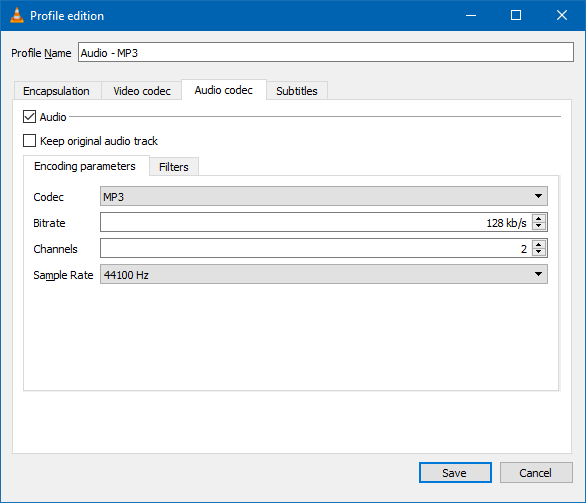

- FFMPEG BATCH CONVERT MP3 MP4
- FFMPEG BATCH CONVERT MP3 LICENSE
- FFMPEG BATCH CONVERT MP3 OFFLINE
- FFMPEG BATCH CONVERT MP3 DOWNLOAD
FFMPEG BATCH CONVERT MP3 LICENSE
michigan chauffeur license practice test. On Linux systems, installing ffmpeg gives us access to the ffmpeg command, which can be used to convert audio files to various types, such as wav, mp3, ogg, etc. Here is the command line for this using output seeking. Options are used to list some of the formats supported by ffprobe or for specifying which information to display, and for setting how ffprobe will show it. Argument '2' provided as input filename, but 'FILENAME. The -tune film option given above can be omitted or you could try -tune animation. Turns out that there is no specific command in FFMPEG to read metadata from a video file, instead this info comes out as a StandardError stream when FFMPEG is called with no output file specified. FFmpeg helps change the playback speed of the video.Video:0kB audio:2748kB subtitle:0kB other streams:0kB global headers:0kB muxing overhead: 0.011728% Stream #0:0(eng): Audio: mp3 (libmp3lame), 44100 Hz, mono, fltp (default) ffmpeg2 -vn -i version N-96102-g26f4ee37f7-tessus Copyright (c) 2000-2019 the FFmpeg developersīuilt with Apple clang version 11.0.0 (clang-1100.0.33.16)Ĭonfiguration: -cc=/usr/bin/clang -prefix=/opt/ffmpeg -extra-version=tessus -enable-avisynth -enable-fontconfig -enable-gpl -enable-libaom -enable-libass -enable-libbluray -enable-libdav1d -enable-libfreetype -enable-libgsm -enable-libmodplug -enable-libmp3lame -enable-libmysofa -enable-libopencore-amrnb -enable-libopencore-amrwb -enable-libopenh264 -enable-libopenjpeg -enable-libopus -enable-librubberband -enable-libshine -enable-libsnappy -enable-libsoxr -enable-libspeex -enable-libtheora -enable-libtwolame -enable-libvidstab -enable-libvmaf -enable-libvo-amrwbenc -enable-libvorbis -enable-libvpx -enable-libwavpack -enable-libwebp -enable-libx264 -enable-libx265 -enable-libxavs -enable-libxvid -enable-libzimg -enable-libzmq -enable-libzvbi -enable-version3 -pkg-config-flags=-static -disable-ffplay
FFMPEG BATCH CONVERT MP3 MP4
Here is a sample code that extracts the audio from a mp4 file and saves it into mp3, using the moviepy library. Opensesame-plugin-media_player_mpy (0.1.6) - Media player plugin for OpenSesame, based on MoviePy Mediadecoder (0.1.5) - Moviepy based media decoding library Livingbio-moviepy (0.2.2.11.3) - Video editing with Python Moviepy-wumii (0.2.3.6.1) - Video editing with Python

Moviepy (1.0.1) - Video editing with Python The built in virtual environment supports comes with Python 3 suffices most use cases.)Īctivate activate.fish easy_install-3.6 pip3 pythonĪctivate.csh easy_install pip pip3.6 python3 (note: virtual environment can be activated in many ways. Installing third party packages in a virtual environment makes it much easier and cleaner to handle the dependencies than installing in the user environment.

I installed the moviepy packages inside a virtual environment since I didn’t have any plans to use this package outside of this use case. I chose to give a try with moviepy library mainly because of its super simple interfaces. That way I can script the process and can have more control over how files are handled and named. So I looked out for a command line tool or a library that I can simply use inside a Python program. Also those apps are usually heavy weight and comes with boat load of stuff that I probably will never use.
FFMPEG BATCH CONVERT MP3 DOWNLOAD
But I did want to download a third party app just for a rare use. There are indeed some apps available in the App Store to extract the audio stream out of the mp4 videos. They do play well in phones but I could not use them as is because of few reasons: 1) they take considerable storage space 2) does not play well in the background, so can’t listen during 3) distracting while driving and so on.
FFMPEG BATCH CONVERT MP3 OFFLINE
I had a bunch of video files of a lecture that I wanted to listen offline while doing errands or driving.


 0 kommentar(er)
0 kommentar(er)
